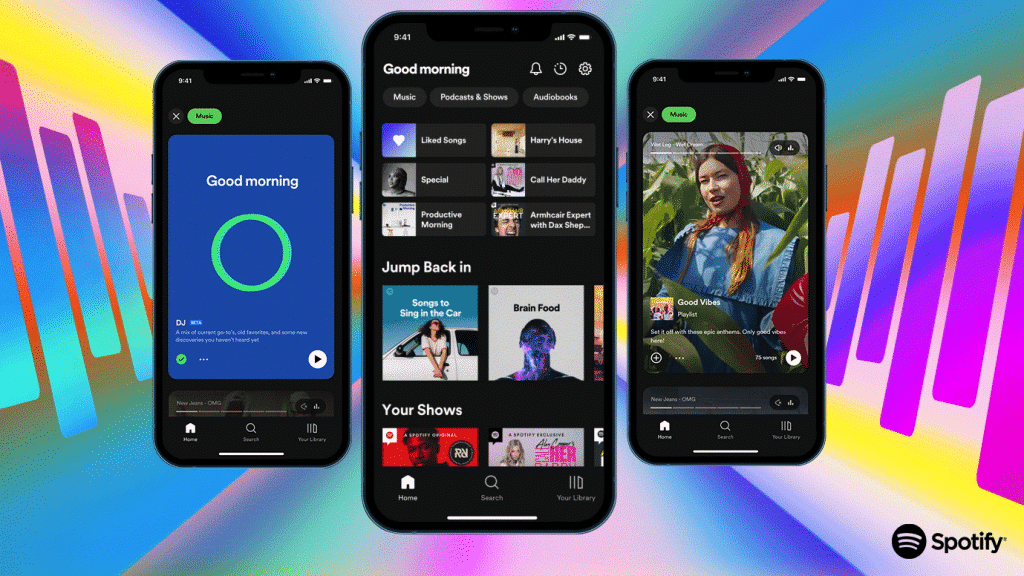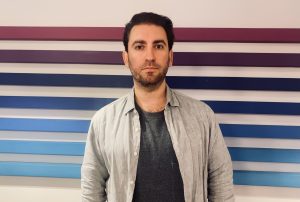The era of vertical-oriented video has, to be fair, been heralded more than once in the decade or so since Snapchat started making waves with this smartphone-centric format. It should come as no surprise that there has now been a sudden rise of the ‘Vertical Director.’ (More to come on that!)
In 2020, Instagram made its own contribution to the vertical video mix with Reels, which was shortly followed by YouTube Shorts. The same year, Jeffrey Katzenberg of Dreamworks fame, and ex-eBay CEO Meg Whitman, made vertical viewing a major selling point of their mobile-only subscription streaming service Quibi (RIP). That was a very short-lived enterprise, yes, but it was competition from rivals like Netflix and Disney+ that did for it – not the mobile-first strategy.
Fast forward to 2023, and music streaming service Spotify is the latest platform to convert to vertical. In March it announced a brand new look, with a vertically swiped homepage.

Arguably, though, it’s been the phenomenal rise of TikTok in the last three years that has taken the format, and short-form content, to new heights, In 2022, the world’s Android users spent an average of 95 minutes watching video on the TikTok app a day, significantly more time than any other social network. That figure is even higher for members of Gen Z, who rack up a whopping 12.4 hours a week.
The vast majority of video for the likes of TikTok and Instagram Reels is user generated. In fact, the in-your-face, intimate aspect of vertical video makes it feel incredibly natural, authentic and compellingly immersive – no wonder so many of us lose hours scrolling through TikTok.
But here’s the thing. At a time when a vertical-first approach matters the most, brands aren’t approaching the medium in the right way. Many lack content specifically filmed and created for that format; instead they are repurposing or cutting down existing content from a landscape format, resizing and cropping or taking clips to create shorter content. These attempts at brand TV ads being turned into TikToks, YouTube shorts, and Instagram Reels are boring, bland and irrelevant – precisely the sort of content that people don’t want to see on TikTok. The content just screams ADVERTTTTT, and the viewers thumb it away Usain Bolt style.
If brands want consumers to sit up and take notice, they need to make content that is entertaining, emotional, funny and more importantly that is fit for the format – whether that’s an Instagram Reel or a TikTok. Short-form content needs to fit that specific platform – there’s a reason why even the most skilled YouTubers fail when it comes to TikTok – and that’s because it’s a different medium that requires a different approach.
Essentially, anyone with a phone (and that’s pretty much everyone) can shoot a vertical video. But if you want it to achieve the best possible return and you want people to remember your brand and build affinity, then you need the right people behind it. There needs to be thinking behind it and then some. Too often, we see agencies asking production companies for their ‘cheapest and youngest’ directors in the belief they can ‘do a tiktok.
This is where vertical directors are making their mark. They know how to produce content that goes viral, that achieves reach and which delivers on return on investment, making sure that as many people as possible watch it for the whole 60 seconds. They have an intrinsic understanding of how stylistic the format needs to be, why the content doesn’t have time to breathe, why from the beginning to the end, there isn’t time to look away. It’s about being enthralled and visually stimulated for the full 60 or 90 seconds. There is a lot going on in a very small space, graphically, visually and audibly.
Not only can vertical directors create viral shorts resulting in billions of views, their ‘three-in-one approach’ to the job – directing, shooting and editing – as well as being able to execute quicker turnaround times, means they can be more efficient and cost-effective than traditional directors.
Vertical videos are no longer happening by accident, because you’ve held your camera the wrong way. With everything and anything available on smartphones, it’s more valuable than ever before to shoot content vertically. Vertical Directors recognise this and those who want to make the most of this opportunity, must adopt a vertical-first approach.

Eddie Gold is founder Gold Studios.
from Digital Marketing Education https://ift.tt/0DFxVgo
No comments:
Post a Comment